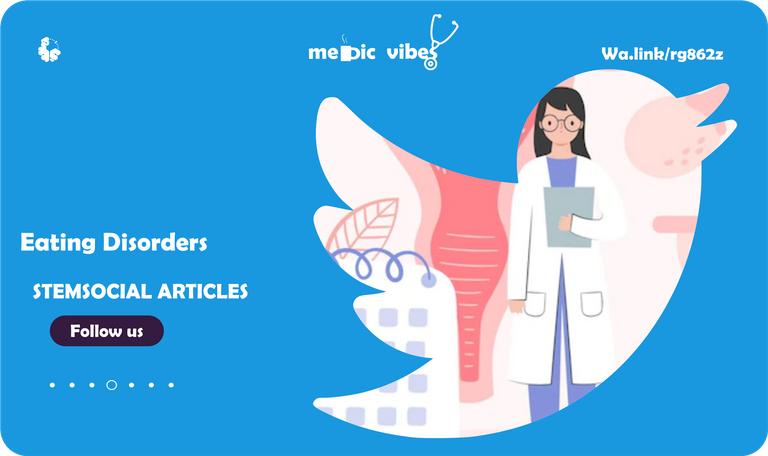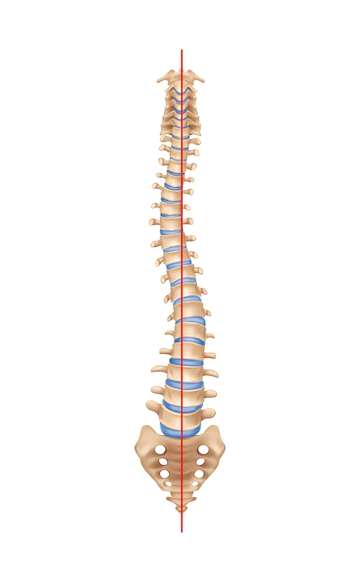Amenorrhea in Eating Disorders (Reaction post)

Depression vector created by pch.vector - www.freepik.com
In the last post, we saw how:
- Schizophrenia may present with eating habits that are abnormal but the main difference is that they are not fixated on the caloric value of what they eat.
- There may be complaints of coxygeal pain in people who have eating disorders.
- PIT is not as effective as CBT in eating disorders

Depression vector created by pch.vector - www.freepik.com
WAIT TO BE OFFICIALLY DIAGNOSED OF ANOREXIA YOU NEED TO LOSE YOUR PERIOD?!?
—Welcome to Medic Vibes, where we discuss mental health disorders and make sense of them. Dr Ebingo Kigigha is a medical doctor (aspiring psychiatrist) and creative person (illustration and music). This has been our routine for four consecutive months. This month will be dedicated to Eating Disorders. In the first month, we discussed Depression, and in the subsequent month, anxiety. We just finished with Schizophrenia.
In this post, we are looking at Twitter posts. To learn more just keep scrolling down. You can also skip to the key point of the post if you which or go to the conclusion to get the summary.

There are different ways a patient with AN can follow through the course of the condition and variance is larger when they are not receiving therapy. Before they recover they may go through different phases of weight loss and weight gain before they become stable.
A study found that those who have the binge and purge type of n tend to do better than those who have the restrictive type. They are usually receptive to hospital treatment in the initial phases of the treatment but as the treatment progress, they tend to be less receptive.
When they start gaining weight they are likely to have a preoccupation with food and their weight and they have bad relationships and fall into depression.
The mortality rate for patients is about 5 to 18%, they generally do not fare so well.
Patients who do better tend to get hungry, do not deny that there is a problem, they are young and usually show improvements in their self-confidence and they get better.
If they exhibit neuroticism that dates back to childhood, have a conflict with parents, have a condition mixed with bulimia nervosa, use laxatives and have other mental health problems like depression and obsessive-compulsive disorder they tend to do badly in treatment.
A 10-year study done in the U.S. showed that only 25% of the patients were seen to have any symptoms and 25% were seen to make significant improvements. 25% of them do not fare so well and 7% of them are likely to become mortality cases and those who still fall below the weight classes below normal. In longitudinal studies that were 2 and 3 decades long, the mortality rate was significantly higher (18%). 50% of patients with AN may have bulimic symptoms in the first 12 months.

Amenorrhea in Eating Disorders (Reaction post)

Every month In women, there are hormonal changes that take place that brings about the shedding of a layer of the endometrial line which is known as menstruation. When a patient has AN the person's normal monthly cycle can not continue. Amenorrhoea may not seem like a big deal to the patient because it is typically an unpleasant feeling to start with but when it stays on treatment it can further complicate the patient's condition.
It is easy to point out that the patient with AN need to gain weight but as we have discussed previously this is usually a very difficult task of r the patient with AN.
Women who are of reproductive age have a regular cycle every 4 weeks that is daily constant and predictable. When this happened for 3 consecutive months the patient fits. Some women miss their period because of physical stress, insomnia and chronic illness.
Some women present to the hospital for amenorrhoea before they present weight loss estimates are about 25% of women who while the remaining will.
Amenorrhoea is a reaction to the starvation of the systems involved in normal ovulation these include the hypothalamic-pituitary axis and the female reproductive anatomy, particularly the ovary. When these systems do not get the necessary substrate for nutrition the presentation clinical is that of an abnormal menstrual cycle.
In essence, your body believes that you’re in grave danger, and it attempts to protect you. Shutting down your reproductive cycle helps to conserve energy, and it ensures that you don’t get pregnant and attempt to nurture another body when you’re not eating enough to feed yourself.
Evolutionary biologists believe that this is an adaptation the body goes through to prevent energy expenditure in nurturing a fetus. By preventing the normal cycle there will be no ova to fertilize in the event of coitus.
There are certain problems Amenorrhoea itself can have on the health of the individual that is worth discussing. The first is pregnancy. If there is no ova for fertilisation then there is no way the woman can get pregnant. Couples struggle with pregnancy sometimes simply because of this reason.
1 in 2 couples struggle with pregnancy and it is important to keep this in mind as a clinician while reviewing your patient who has amenorrhoea.
It is also possible that because the menstrual cycle is irregular in amenorrhoea the patient may have an unplanned pregnancy and it is estimated that up to 50% of women with AN have unplanned pregnancies. There is also a higher chance that the patient will have an abortion or premature birth or low birth weight birth.
Because of the weight gain during pregnancy the patient may also become more self-conscious about the weight gain.
The patient will also be more prone to fractures because estrogen is also involved in bone density. The biggest effect An has is during adolescence and this is when estrogen secretion is highest and this is why they can be prone to fractures for the longest periods of their life. The cause of the fractures is low-impact incidences.
Amenorrhoea can predispose a patient to reach menopause earlier in life. This not only presents the problem of not being able to pregnant but there are other features the patient may have such as hot flushes, making the patient feel hot and seat. These flushes may happen at night also and cause night sweats.
The patient may have dyspareunia because the patient has low levels of estrogen which leads to dryness in the vagina and leads to lack of pleasure in sex.
There are cardiovascular problems associated with menopause like hypertension and its complications.

Treatment
Randomized controlled trials proposed the use of antipsychotics these were done in the 1990s. These were proposed as therapy because of the delusion that is seen in these patients. There were positive weight parameters but there was no advantage in the eating habits of the patients in this study. The Extrapyramidal side effects of these drugs were deterrents form form continuing these trials. These atypical antipsychotics have not been used in studies thereafter.
Questions
- What did you learn about Eating Diorders?
Conclusion
- There are different ways AN can present.
- AN can cause amenorrhea and all its complications.
- Randomised studies have shown that atypical antpsychotics are not very effective.

References
- Kaplan-Sadocks-Comprehensive-Textbook-Psychiatry
- Page demarcations made with Inkscape.org
- Spine-Health
- Biomed Central
Thanks for your contribution to the STEMsocial community. Feel free to join us on discord to get to know the rest of us!
Please consider delegating to the @stemsocial account (85% of the curation rewards are returned).
You may also include @stemsocial as a beneficiary of the rewards of this post to get a stronger support.